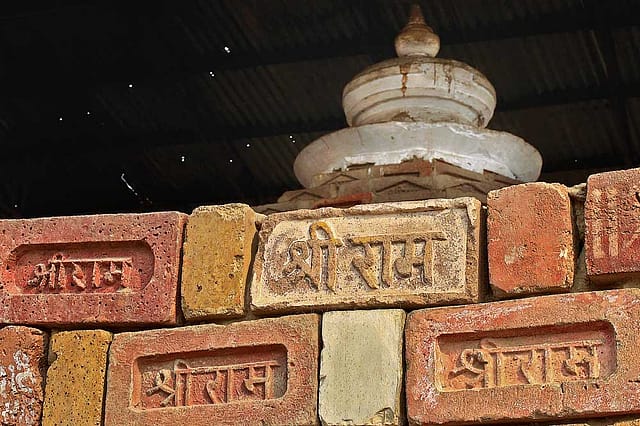Ayodhya Needs Renewal

Uttar Pradesh Chief Minister Yogi Adityanath has announced plans to demolish several old temples in Ayodhya in order to build new structures, including some statues. How does such a plan mesh with the ancient traditions of this land? Hardly at all. It must be remembered that Hinduism is one of the most ancient belief systems, one that continues to be a contemporary way of life even today. Cave engraving, daubings and rough stone figures came to be revered as divinity across countless generations of belief. The scornful epithet "idol worshippers" became directed at the Hindus, who ignored such barbs and continued with the veneration of the consecrated sacred.
It may seem to be like grown ups play-acting when an image made usually out of stone, wood or metal is "awakened" through incantations, washed, "fed" through offerings, adorned and ceremoniously put to sleep to the accompaniment of softly expressed chants each night, with the whole cycle being repeated endlessly. But there is a very deep philosophical root behind this. Imagine that there is a beautiful photograph of your favourite grandmother or teacher. Despite knowing that it was just a likeness and not the original, would you be comfortable stamping on it? Or spitting on it? If not, it shows the lure of symbolism on the human mind.
2025 In Review
12 Dec 2025 - Vol 04 | Issue 51
Words and scenes in retrospect
A sculpted figure transforms into an idol to be revered only after a long process of consecration. At the primary level, the statue that is to be consecrated is carved or moulded with the accoutrements of the specific divinity. For example, the lion mount, weaponry and smiling visage of the Mother Goddess, the serpentine bed of Padmanabha or the moon and river clad dancer, Shiva. This is just a physical likeness that is called Prathima. Numerous esoteric rituals later, the figure reflects Divinity and is thereupon named the Bimbam. It is the Bimbam which finally graduates into becoming a Vigraham. It is the Vigraham that is seen to be not just like divinity, but actual divinity.
It is the Vigraham that is seen as able to receive, emit and transmit metaphysical vibrations and act as a beneficial reference point for the believers. The longer the Vigrahams assimilate these divinity-enhancing processes, the greater their power. They become rather like deathless ancestors and a perennial source of love and protection. Such elaborate rituals and practices cannot be jettisoned or short-circuited, that too by individuals representing themselves as the saviours and custodians of ancient traditions.
Rather than be destroyed, the older temples of Ayodhya need to be restored and preserved. After all, they stand on consecrated land. The better the idols are treated, the greater the power of the deities. The hoary texts of Thanthra Samuchchaya, Paancharaathra state very clearly the benefits and the consequent duties attributed to those coming into the presence o, and performing rituals on, the Vigrahams. The converse is equally true.
Disregarding older deities will result in the breaking of the promises made to the ancients to respect them. As in any corporate misdemeanor, there are negative consequences to this. The older the shrine, the greater the harm that is assumed to ensure. Ayodhya is the birth place of Shri Rama, the eighth incarnation of Maha Vishnu. Much like Mathura or Vrindavan, indelibly associated with Krishna, Ayodhya is suffused with what may be termed Ram-ness.
Walking through the by-lanes of Ayodhya with the eminent British journalist, Antonia Filmer, every third house of Ayodhya had a Rama-related story for we strangers. Yes, the houses are dilapidated. True, the lanes are often filthy. Yet the romance and grandeur of this all too mortal form of the avatar of Maha Vishnu permeates into the very air of this ancient capital.
Certainly Ayodhya requires a drastic makeover. It is astonishing that this has not taken place, even after 1947. People living there have to have a modicum of comfort and not simply the privilege of being born in Rama's country. Constructing new statues, and diverting Sarayu waters to wash those newly minted feet would be judged by genuine upholders of ancient traditions as anathema to the very tenets of Rama Rajya.
The natural progression of a Hindu is Dharma (righteousness), Ardha (wealth), Kama (desire) and Moksha (salvation). Money is but a necessity for living. If the sanctity of the idea of Ayodhya and all it stands for, is to be preserved, it is time that all Hindus came together to restore and preserve this city, rather than letting this become a city that gets altered at its very core, conquered by ignorance of tradition and apathy to the spiritual and cultural riches that deserves not demolition, but renewal.
